
Reading Co. Photo Gallery - Towers
Wayne Junction Tower (WS), Philadelphia Division
Quite some time ago, we received photos from a (then) SEPTA employee, Bob Boguski, of the Philadelphia area. He wanted to share some views of one surviving Reading tower, at Wayne Junction.
Inside a tower, there is usually one or more model boards. The model boards show simplified diagrams of trackage being controlled somewhere in the outside world. The track being controlled is often an interlocking plant, a big collection of railroad switches allowing trains to be moved between tracks or onto sidings or branches.
Colored lights on the model board represent positions of railroad switches in the plant, as well as the indication of trackside signals. Small pushbuttons or toggles on the model board allow operators to remotely throw the railroad switches and change signal indications. A close up view is shown below.
The signals and switches are interlocked, or linked in a controlled manner to avoid dangerous situations. For example, two trains would (hopefully) be prevented from approaching each other on the same track.
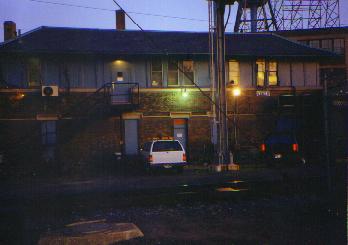 As this photo shows, the tower is a big structure, with two stories and a sizeable floor plan. The interior photos below are taken on the second floor.
|
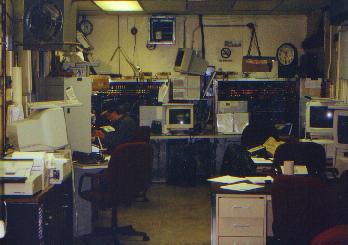 This overview shows both “Wayne” and “Wind” model boards. Wayne is an L-shape in the corner at left. Wind is another L-shape, in the corner under the clock at right.
|
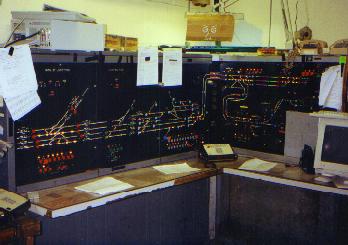 The Wayne interlockings left to right:
|
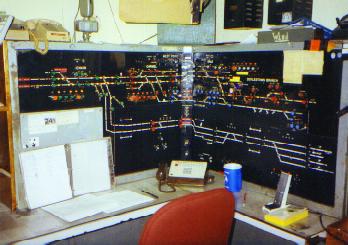 Wind interlockings left to right:
|
16th Street Junction (JU), Philadelphia Division
If you know what you are doing, the lights and buttons shown below allow you to throw switches to move trains safely and efficiently between tracks.
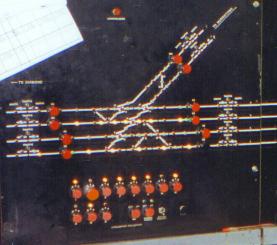 By studying the lines, you can see that a train can be switched just about anywhere between tracks, although it may have to reverse direction. |
| For more information: | |
|---|---|
| • RRSIGNAL.COM (Rich White) info/photos on the RDG’s Oley, Valley Jct. (VC), Rutherford and Schuylkill Haven (SC) Towers • Railroad Signalling & Communications photo of Brooke Tower, Birdsboro info and photos of Schuylkill Haven (SC) Tower |
|
| *(tower info and photos courtesy Bob Boguski) | |
Back to the Reading Co. Photo Gallery Main Page
 |
 |
 |
 |
|
|